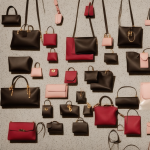Have you ever looked out your window and wished you could bring more of the diversity of birdlife into your yard? Do you have an interest in birdwatching or simply enjoy the serene sight and sound of birds in nature? If so, choosing the right bird feeder for your yard is an essential step in inviting a variety of birds to visit. But with so many types of bird feeders available, how do you make the right choice?
In this article, you will be guided through the process of selecting the perfect bird feeder to cater to a wide range of bird species. We’ll delve into the different types of bird feeders, what to consider when choosing a feeder, and how to attract different types of birds.
A lire en complément : What Are the Best Tips for Ensuring Your Pet’s Comfort During Hot and Humid Weather?
The Different Types of Bird Feeders
Before you can select the perfect bird feeder, it’s important to understand the various types available.
Tube feeders are the most common type. They are cylindrical in shape, often with multiple feeding ports and perches. They are great for attracting a variety of small to medium-sized birds like finches, chickadees, and sparrows.
Lire également : What Are the Best Pet-Care Apps for Managing Your Pet’s Health and Activities?
Hopper feeders, on the other hand, are box-like and usually have a large capacity for seeds. They are perfect for attracting a wide variety of bird species, including both small and large birds.
Platform feeders are flat and open, making them accessible to any bird that wants to land. They can attract a wide range of birds, from small songbirds to large birds like pigeons or doves.
Suet feeders are unique as they are designed to hold suet cakes, which are high energy, fatty foods that many bird species love. These feeders can attract a variety of birds, including woodpeckers, nuthatches, and starlings.
Nyjer feeders, also known as thistle feeders, are designed specifically to hold Nyjer seeds. They attract finches and other small songbirds.
What to Consider When Choosing a Bird Feeder
Choosing the right bird feeder involves considering several factors.
Bird species in your area: Research the types of birds that are native to your area or that are known to pass through during migration seasons. This will help you select the feeder that caters to their specific feeding habits and preferences.
Size and capacity: Consider the size of the bird feeder in relation to the space available in your yard. The capacity of the feeder is also important, as it determines how often you’ll need to refill it.
Material and durability: Bird feeders can be made from a variety of materials, including plastic, metal, and wood. You’ll want to choose a material that’s durable and able to withstand the elements, as well as the activity of the birds.
Ease of filling and cleaning: Look for a bird feeder that can be easily opened for filling and cleaning. This is important for maintaining the health and safety of the birds.
Squirrel-proof features: If squirrels are common in your area, consider a squirrel-proof bird feeder. These feeders are designed to prevent squirrels from accessing the bird seed, ensuring that it’s reserved for your feathered friends.
How to Attract Different Types of Birds
Once you’ve chosen your bird feeder, the next step is to attract birds.
Different types of birds have different feeding preferences. For example, black oil sunflower seeds are a favorite among many bird species and can attract a wide variety, including finches, cardinals, and chickadees.
However, if you want to attract a specific type of bird, you may need to offer the type of food they prefer. For example, suet is particularly attractive to woodpeckers, while Nyjer seeds will attract finches.
Additionally, the placement of your bird feeder can impact which birds will visit. Some birds prefer to feed at ground level, while others prefer to feed from hanging or pole-mounted feeders.
You can also attract more birds by providing a water source, such as a birdbath, and by planting native plants that provide natural food sources.
The Impact of Seasonal Changes on Bird Attraction
Seasonal changes can impact the types of birds that visit your yard. During migration seasons, you may see bird species that you don’t usually see. During winter, birds may rely more heavily on your feeder as natural food sources become scarce.
It’s important to keep your bird feeder stocked with fresh food throughout the year. However, during winter, consider providing high-energy foods, like suet, to help birds withstand the cold temperatures.
Also, remember to keep your bird feeder clean. A dirty bird feeder can spread disease among bird populations. So, regularly cleaning your bird feeder is essential for keeping birds healthy and happy.
In conclusion, choosing the right bird feeder can bring a variety of birdlife into your yard, providing you with endless opportunities for birdwatching and the joy of connecting with nature. So, embark on your bird feeder selection journey today and look forward to the flutter and chirp of birds visiting your yard soon!
Bird Feeders and Weather Conditions
Weather conditions can play a significant role in your bird feeder selection. Extreme weather like heavy snow or rain can spoil the bird food or make it difficult for the birds to feed. A good bird feeder should have a protective cover to shield the food from adverse weather conditions. Tube feeders and hopper feeders have an inherent advantage in this regard. Their design allows them to provide some shield against precipitation, keeping the birdseed dry.
You should also consider the wind in your area. Platform feeders, while open and accessible to a variety of bird species, can be less suitable if your yard is exposed to high winds, which can scatter seeds. A covered feeder or one with a design that keeps seeds in place would be a better choice.
The climate of your area could also determine what materials your bird feeder should be made of. For example, in hot climates, plastic feeders can deteriorate quickly under the strong sun. Metal feeders may become too hot to touch, discouraging birds from perching. Feeders made of durable wood or specially treated metals could be better options in such cases.
The Role of Surrounding Vegetation
The vegetation surrounding your bird feeder, particularly native plants, can significantly impact the variety of birds attracted to your yard. Bird species are attracted to different habitats. For instance, finches are attracted to meadows and fields, so a bird feeder surrounded by grasses and wildflowers may attract these species. On the other hand, woodpeckers are attracted to wooded areas, so placing your feeder near trees can attract them.
In addition, using native plants in your yard can provide additional food sources and nesting habitats for birds. This can encourage them to visit your yard more regularly and can even attract species that may not typically be attracted to feeders.
Lastly, you should consider the risks of predators when positioning your bird feeder. Keep the feeder at a safe distance from dense vegetation where cats or other predators may hide.
Conclusion
Attracting a variety of birds to your yard is a rewarding experience that allows you to engage with nature right at your doorstep. But the key to attracting a diverse range of bird species is choosing the right bird feeder. With a sound understanding of the different types of feeders, the bird species in your area, and factors such as weather and surrounding vegetation, you can select the perfect feeder to bring a vibrant birdlife into your yard.
Remember, keeping your bird feeder clean and well-stocked, particularly during winter, is as important as choosing the right feeder. The joy of birdwatching and the soothing sounds of birdsong make the effort worthwhile. So, start your bird feeder journey today and enjoy the unique and ever-changing world of birds in your own yard.






